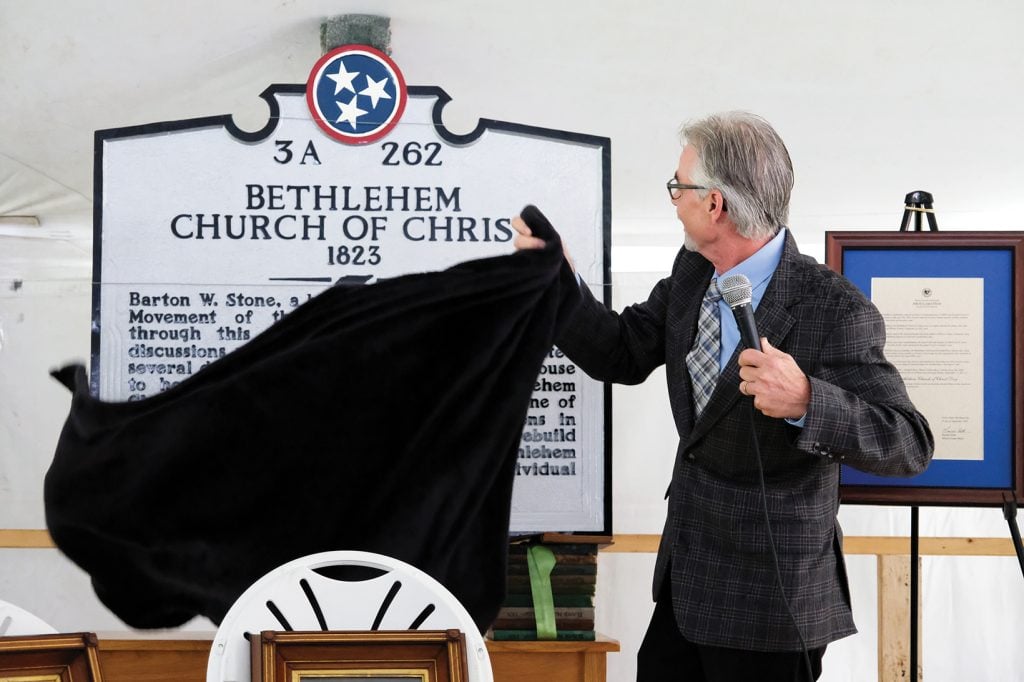
One of America’s oldest Churches of Christ celebrates its 200th anniversary
TUCKERS CROSSROADS, Tenn. — The Bethlehem Church of Christ has a…
| Refresh | This website christianchronicle.org/editorial-why-the-restoration-plea-is-still-valid/ is currently offline. Cloudflare's Always Online™ shows a snapshot of this web page from the Internet Archive's Wayback Machine. To check for the live version, click Refresh. |
|
Getting your Trinity Audio player ready...
|
Minister shortages. Closing churches. Struggling theology schools.
All are happening in Churches of Christ in the U.S., which raises the question: Is the restoration plea still valid?
As part of the Restoration Movement in America, our fellowship has campaigned for a return to the earliest design and intention of Christianity. At its foundation, the restoration plea is not a collection of doctrinal positions or statements. Rather, it’s an attitude and a goal.
The call to restoration is a simple plea to commit ourselves to God’s purpose as revealed in Christ and articulated through Scripture. By doing so, our hope has been that the unsightly divisions among people professing to be Christians would be replaced with Christian unity.
Related: One of America’s oldest Churches of Christ celebrates its 200th anniversary
The desire to “restore New Testament Christianity” is built on an assumption that first century Christians sufficiently modeled God’s purest intention to follow Jesus. The call to “speak where the Bible speaks and be silent where the Bible is silent” assumes that Scripture accurately captures Christ’s design for his church. It assumes that we are capable of faithfully discerning and replicating that design. And the often-quoted rally “In matters of faith unity, in matters of opinion liberty and in all things charity” is a reminder that not every difference should lead to division.
And yet, division remains.

Pulpit minister Donnie Rhoten unveils a historical marker for the Bethlehem Church of Christ in Tuckers Crossroads, Tenn., about 35 miles east of Nashville. The 200-year-old congregation traces its roots to studies led by Barton W. Stone, a key Restoration Movement leader.
The problem is, not everyone accepts these assumptions. The earliest Christians were imperfect in their efforts to follow Jesus, and every congregation had its flaws. To the degree that Scripture describes Christ’s design for his church, our efforts to accurately listen to what Scripture says and discern the implications of Scripture’s silence have led to sincerely held differences. And our track record of distinguishing matters of faith from matters of opinion has often been less than charitable.
As a result, the Restoration Movement has divided over countless issues through the years.
Given the disparity between the goal of unity and the current state of disunity, questioning the validity of the restoration plea is understandable.
Given the disparity between the goal of unity and the current state of disunity, questioning the validity of the restoration plea is understandable.
Like our earliest brothers and sisters, we have imperfectly followed Jesus. Every congregation has its own imperfections.
However, admitting this reality simply illustrates that there is an idea to which God calls us. There is an expectation of his church.
Our challenge, like that of the early church, is to be who God intends us to be. This is the work of realization, not just restoration.
Jesus is the “image of the invisible God,” the image we were created to reflect. His life was governed by a simple prayer: “Not my will but your will be done.” His church is designed as a community of believers who continue his ministry in the world.
The New Testament reveals both the successes and failures of the early church as Christians tried following Jesus in their context. At times their efforts warranted correction. At other times, they needed encouragement. Along the way, inspired writers pointed them toward the “eternal purpose” God had in mind.
Related: The oldest Church of Christ in America? It’s complicated
Call it a “blueprint,” “pattern” or “regular order,” but the life of the early church practiced a certain rhythm. Members met regularly to remember Jesus in communion and encourage other believers through prayer, singing and listening to Scripture. New believers were immersed with the belief their sins would be forgiven, and they would be filled with God’s Spirit and raised to share in the work of Christ. Against the norms of the time, the church accepted Jews and Gentiles, slave and free, women and men, rich and poor — encouraging them all to model Jesus in their lives.
Against the norms of the time, the church accepted Jews and Gentiles, slave and free, women and men, rich and poor — encouraging them all to model Jesus in their lives.
Is the restoration plea still valid?
Absolutely! The need for unity remains.
God’s vision of his church cannot be ignored. The Restoration Movement aims to restore that intention and work to realize it in our time. The movement is an invitation for believers to work together toward that end.
May God grant us unity, grace and strength as we try to embody the Gospel in our world today. — Jeremie Beller, for the Editorial Board
Subscribe today to receive more inspiring articles like this one delivered straight to your inbox twice a month.
Your donation helps us not only keep our quality of journalism high, but helps us continue to reach more people in the Churches of Christ community.